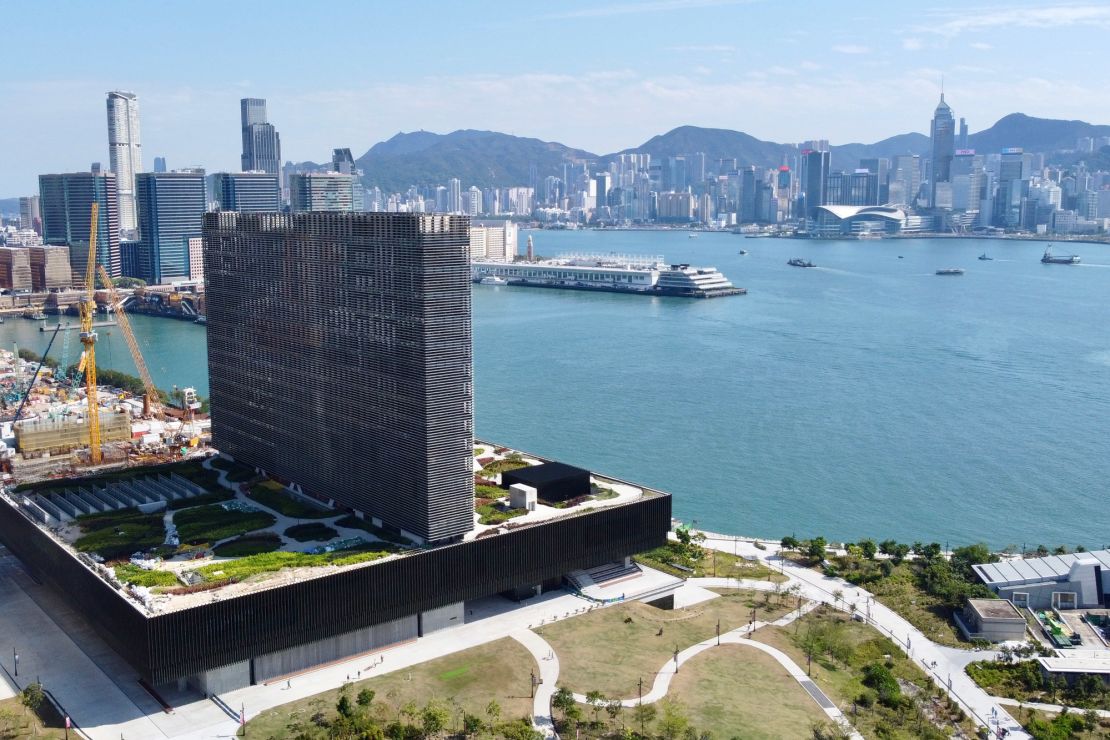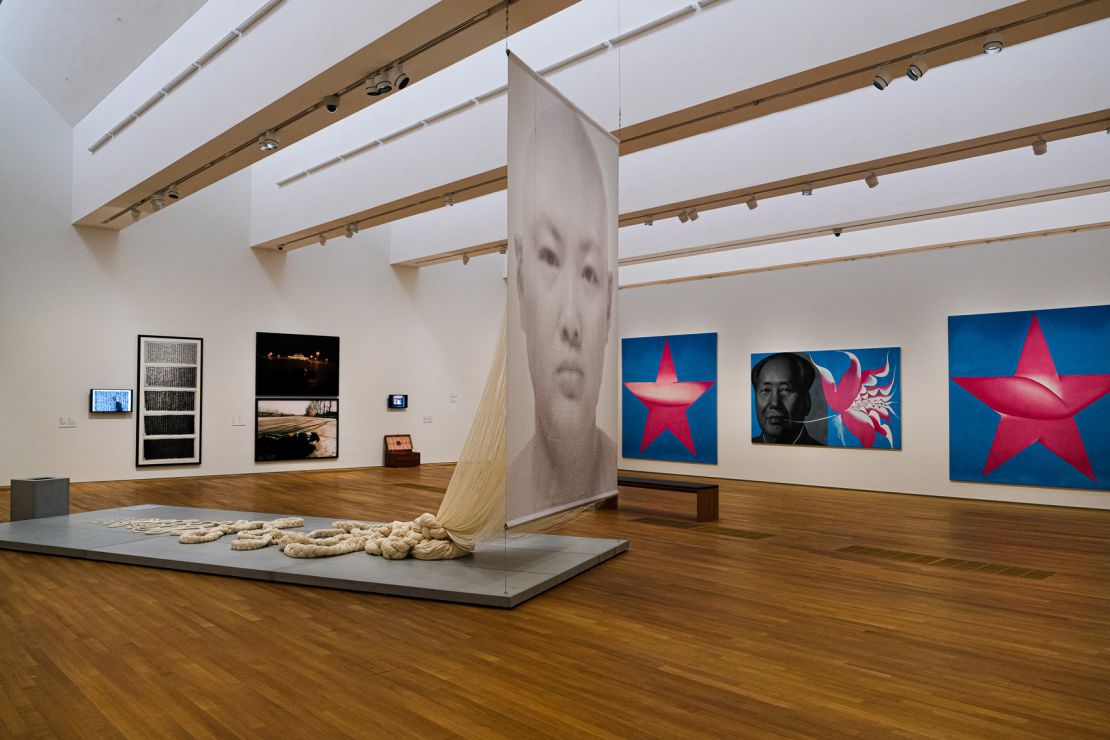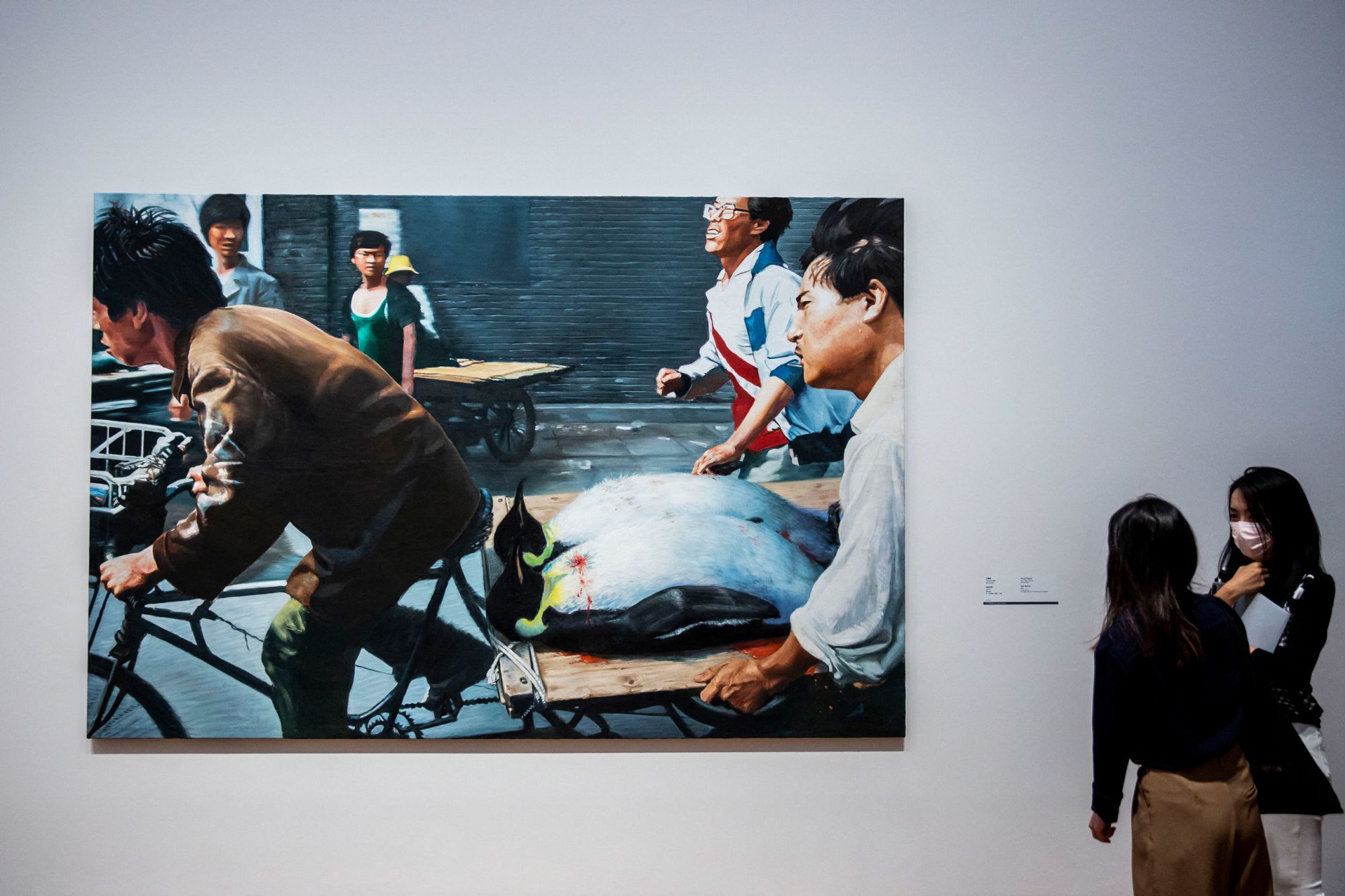Editor’s Note: A version of this story appeared in CNN’s Meanwhile in China newsletter, a three-times-a-week update exploring what you need to know about the country’s rise and how it impacts the world. Sign up here.
For the last three months, Hong Kong’s art galleries have been closed to the public as part of failed efforts to curtail the Omicron variant’s charge through the city. But as restrictions eased Thursday, visitors returned to one museum to find some works from its contemporary Chinese art collection conspicuously absent.
Among the items removed from display at M+, a major new arts institution, was the provocative oil painting “New Beijing” by Chinese artist Wang Xingwei. Created in 2001, the satirical work depicts bloodied emperor penguins lying on a bicycle cart – a thinly veiled allusion to the deaths of pro-democracy protesters, most of whom were students, during the 1989 Tiananmen Square massacre.
The painting references an image by Hong Kong photographer Liu Heung Shing, who documented the protests for The Associated Press. The penguins take the place of two injured young men that Liu had captured in the original photograph.
Images published by local media outlet Hong Kong Free Press on Thursday show a different painting in the spot where Wang’s work had previously hung. Both Liu’s original image and Wang’s parody are owned by M+ and remain listed in the museum’s online archive.
Eight other artworks were also removed from view, including the painter Wang Guangyi’s depiction of former Chinese leader Mao Zedong covered with a grid of red lines. Not all of the withdrawn works contained explicitly political content. In a statement emailed to CNN, West Kowloon Cultural District Authority, the organization that oversees M+, said that paintings’ removal was part of a routine “rotation” of exhibited art.
“It has always been M+’s plan to rotate over 200 artworks in the first year after its opening,” the statement read, citing maintenance related to “artwork conditions and conservation needs.” It added that further works are expected to be rotated out over the coming few months.
The organization did not directly address whether any of the works were removed for political reasons but did state that exhibitions are curated “in full compliance with relevant laws and regulations.”

The paintings form part of a 1,500-strong trove of Chinese contemporary artworks donated to M+ by Swiss collector Uli Sigg in 2012. All of the items were created between the 1970s and 2000s – a period in which China underwent seismic political and societal shifts.
When the museum opened in November 2021, less than 18 months after Hong Kong’s sweeping National Security Law effectively curbed political dissent, many observers wondered if the collection’s more risqué works – including those by Chinese dissident artist Ai Weiwei – would see the light of day. Prior to M+’s opening, Hong Kong leader Carrie Lam had warned officials to be “extra cautious” in ensuring that the museum’s exhibitions did not breach the new legislation.
An infamous image of Ai Weiwei holding a middle finger up to Tiananmen Square was excluded from M+’s inaugural display. But the inclusion of “New Beijing,” as well as various depictions of Mao Zedong, had left some in Hong Kong’s art world hopeful that curators would enjoy a degree of freedom when it came to showing politically sensitive works.

Over the past six months, several high-profile Tiananmen-related artworks have been removed from view in Hong Kong, which was once the only place on Chinese soil where people could freely commemorate the victims of the bloody crackdown. (A candlelight vigil remembering the massacre’s victims was held every year for three decades until it was banned in 2020.)
Among them was the renowned “Pillar of Shame,” a mass of writhing bodies and screaming faces that had long stood on the University of Hong Kong’s campus. The sculpture was taken down in the middle of the night when students were away on winter break.
Shortly after, two other universities removed replicas of the “Goddess of Democracy,” a statue first erected by students in Tiananmen Square in 1989, from their campuses.
An image of “New Beijing” (2001) by Wang Xingwei at M+ on November 11, 2021.



